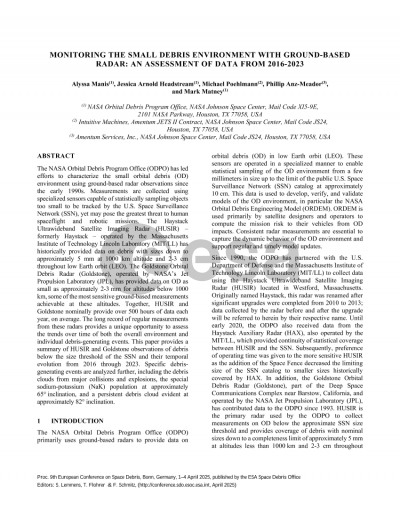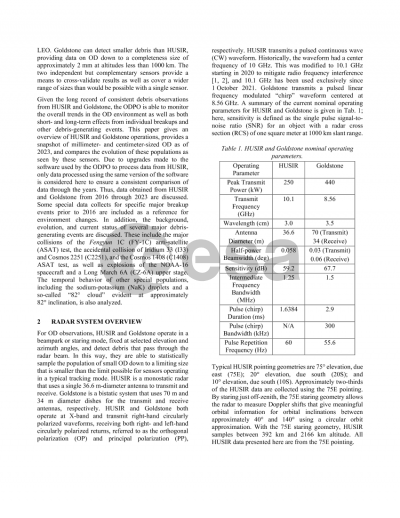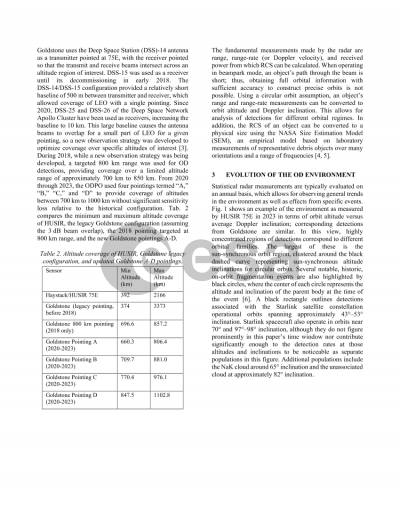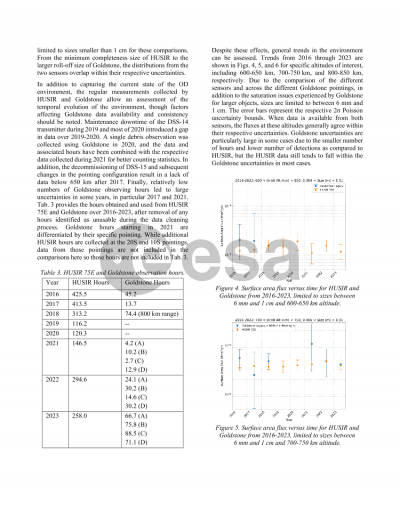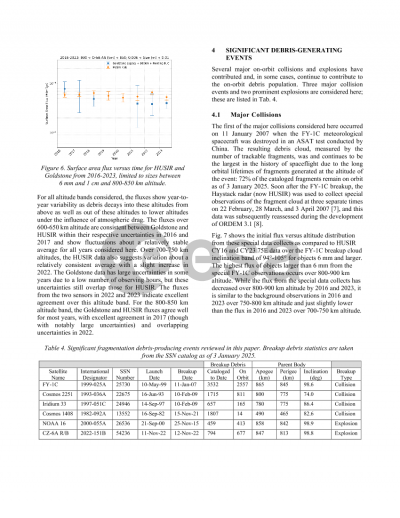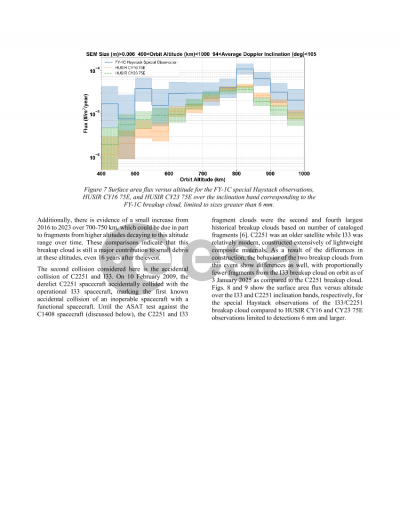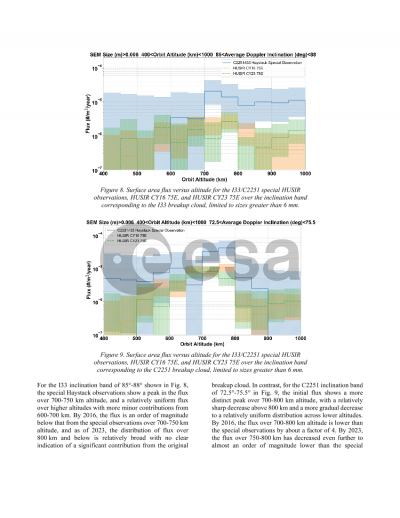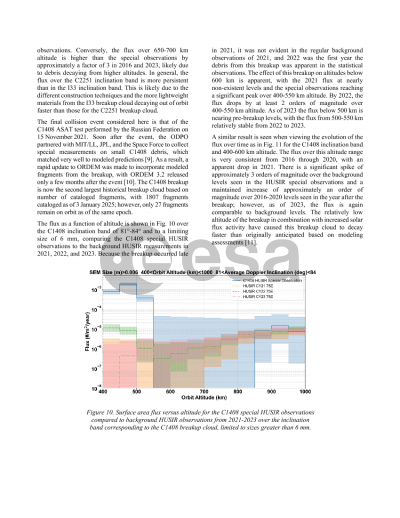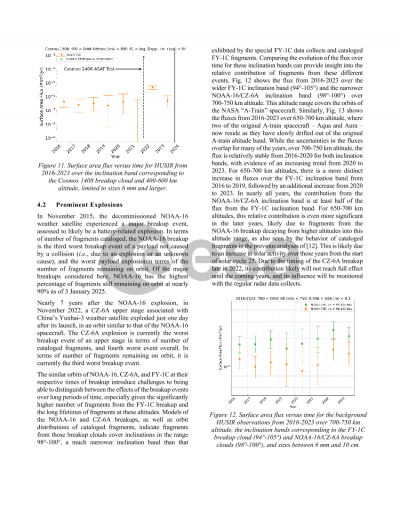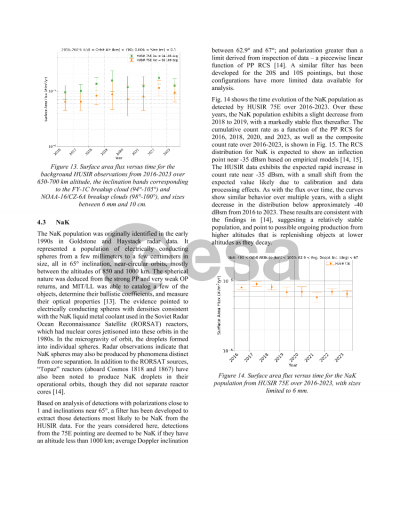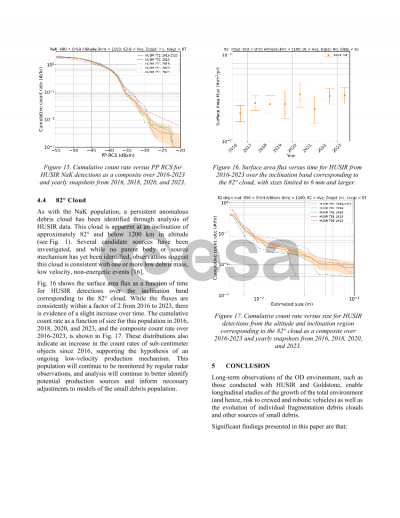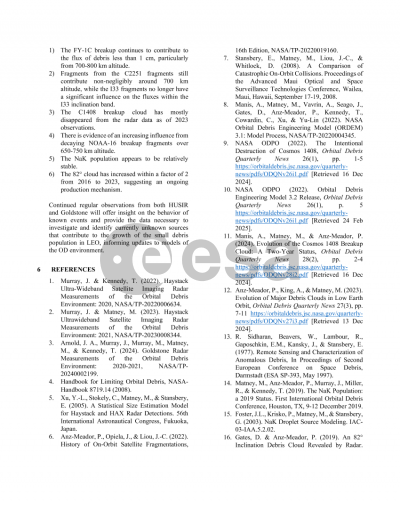Document details

Abstract
The NASA Orbital Debris Program Office (ODPO) has led efforts to characterize the small orbital debris (OD) environment using ground-based radar observations since the early 1990s. Measurements are collected using specialized sensors capable of statistically sampling objects too small to be tracked by the U.S. Space Surveillance Network (SSN), yet which may pose the greatest threat to human spaceflight and robotic missions. The Haystack Ultrawideband Satellite Imaging Radar (HUSIR) – formerly Haystack – operated by the Massachusetts Institute of Technology Lincoln Laboratory has historically provided data on debris with sizes down to approximately 5 mm at 1000 km altitude and 2-3 cm throughout low Earth orbit (LEO). The Goldstone Orbital Debris Radar, operated by NASA’s Jet Propulsion Laboratory, has provided data on OD as small as approximately 2-3 mm for altitudes below 1000 km, some of the most sensitive ground-based measurements achievable at these altitudes. Together, HUSIR and Goldstone nominally provide over 500 hours of data each year, on average. The long record of regular measurements from these radars provides a unique opportunity to assess the trends over time of both the overall environment as well as individual debris-generating events. This paper provides a summary of HUSIR and Goldstone observations of debris below the size threshold of the SSN and their temporal evolution from 2016 through 2023. Specific debris-generating events are analyzed further, including the debris clouds from major collisions and explosions, the special sodium potassium (NaK) population at approximately 65° inclination, and a persistent debris cloud evident at approximately 82° inclination.
Preview
